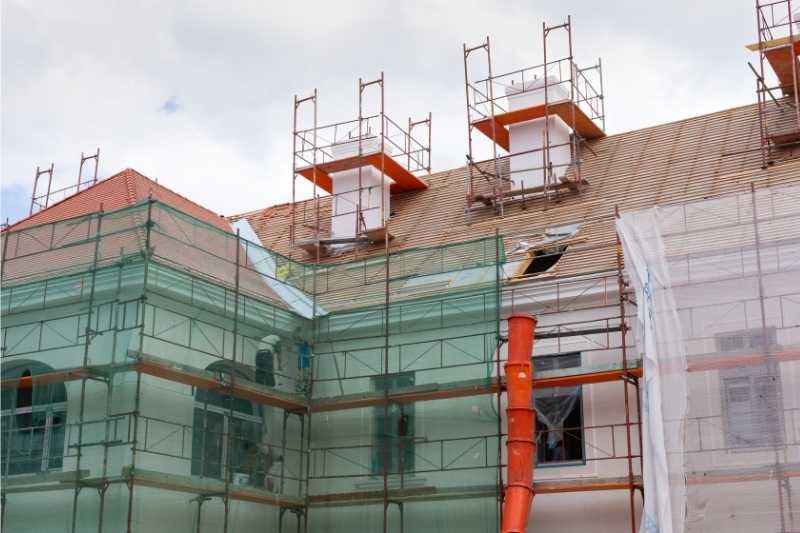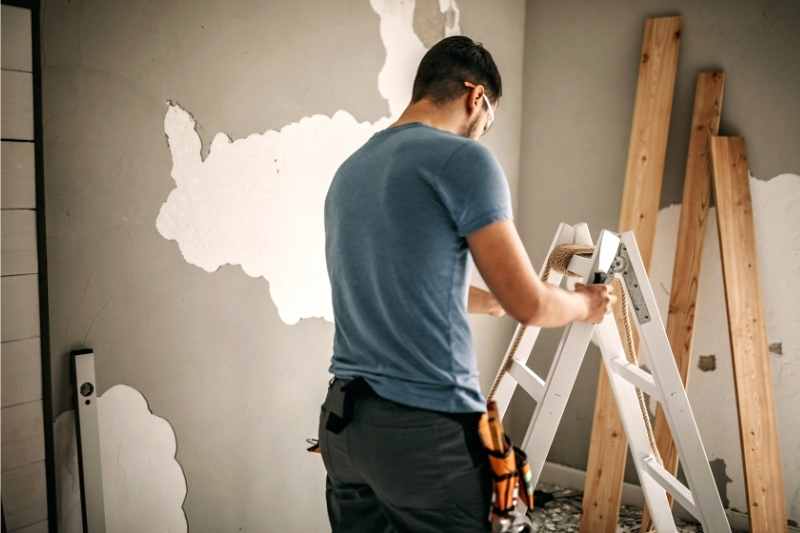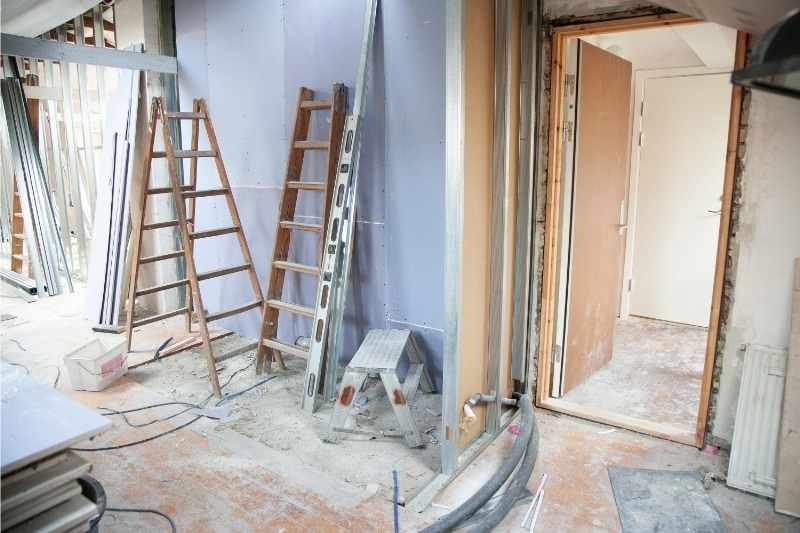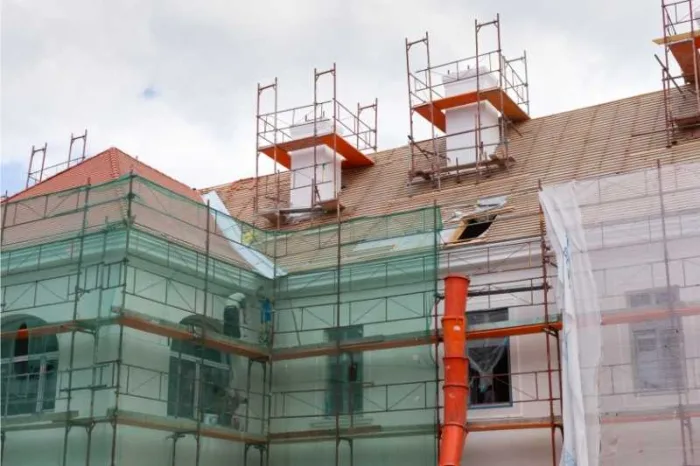Key takeaways
- Multifamily renovations involve making improvements to your building that will increase its value.
- Renovations vary in cost, but for the sake of budgeting, you should plan for them to be more expensive and to take longer than you originally estimate.
- Multifamily renovations take place in six stages: Planning, financing, contracting, demolition, construction, and beautification.
- When searching for a contractor, make sure they have prior experience with renovations for residential properties. Double-check their references, qualifications, and portfolio of work.
- Before beginning renovations, you should prioritize the happiness of your current residents living in your property, strategize for sustainable and tech-based renovations, and remember to also update your building’s curb appeal.

Multifamily renovation is one of the best ways to increase a property’s value. However, this real estate development process can be tricky to navigate effectively.
Our guide will cover how much a multifamily renovation will likely cost. Next, we review the typical stages of a renovation and briefly dive into what multifamily renovation companies can do for you. Finally, we offer four tips for you to follow before diving into the multifamily renovation process yourself.
This post covers:
- What is a multifamily renovation?
- How much does a multifamily renovation cost?
- How to find multifamily renovation contractors
- What are the stages of renovation?
- 4 tips before starting the multifamily renovation process
What is a multifamily renovation?
A multifamily renovation involves significantly remodeling a property so that it runs more efficiently and is more appealing to renters.
Renovations can involve:
- New floors
- Retrofitted access control systems
- Updated lighting
- Extensive electrical rewiring
- New roofing including solar panels
- Redesigning rental unit layouts
- Additions to the building in the form of new units, storage rooms, bathrooms, and staff areas
Discover the top 5 multifamily design trends:
How much does a multifamily renovation cost?
Multifamily renovation costs depend on the size of your property and the scale of the renovations you have in mind. On average, renovations range between $10 and $60 per square foot. You’ll get a general estimate from this range that you can start budgeting toward.
Presently, we recommend anticipating the higher end of what it’ll cost to rehab an apartment building. Unfortunately, quality multifamily renovation contractors do not come cheap. We’ll go over how to accurately find them later on in this guide.
What is a multifamily value-add model?
A multifamily value-add model is a strategy that allows you to significantly charge more rent after renovating your multifamily development. You can use the upgrades and additions to your building to justify this higher cost. By having added more value to your building, you’re offering more to your prospective residents.
What is a renovation premium?
A renovation premium is an agreement you make with a lender that covers the time it takes to recover the expenses associated with a renovation. Known as going in arrears, the renovation premium gives you time to find residents and meet your anticipated ROI goals.
Do multifamily properties appreciate?
Yes, multifamily properties absolutely appreciate in value, especially after they’ve been renovated to meet the needs of modern renters.

How to find multifamily renovation contractors
The first quality you should look for in a contractor is their experience with multifamily renovations. Multifamily renovation contractors understand the timeliness associated with these types of projects. Additionally, they better appreciate that there might be other contractors operating independently of them. You should never choose a contractor that only has experience renovating single-family homes.
Further tips for finding the right multifamily contractor are to:
- See if they have a portfolio that shows you the before and after of their renovation work.
- Receive a written estimate for both the cost and how long they expect the renovations to take.
- Reach out to a contractor’s previous clients for a reference.
And after choosing a contractor, you should:
- Never pay the total price upfront (down payments are acceptable).
- Get copies of the contractor’s specialized licenses and insurance.
- Hold on to the contractor’s price estimate and completion dates in writing.
What are the stages of renovation?
Multifamily renovations involve roughly six stages that apply to all renovation projects.
The stages of renovation are:
- Strategizing: This involves planning out what you want to renovate down to the last detail. You should create a spreadsheet of priorities separated by location within your property (such as indoors and outdoors).
- Financing: This involves budgeting, gathering investment capital, and securing loans.
- Outsourcing: This stage involves finding the right contractors or company for the job.
- Demolition: The demolition stage is when everything that you want to be renovated is removed or broken down. This can include drywall, old appliances, and sections of the building, depending on how extensive renovations are.
- Construction: This is the most exciting part! The construction phase is when the renovations are put in place.
- Beautification: Also known as the clean-up phase, this is when you make your newly renovated multifamily property visually appealing. It can involve painting newly installed drywall, decorating the exterior of your building, and adding other finishing touches. Typically, your renovation contractors won’t be involved with this part.

4 tips before starting the multifamily renovation process
You’ve begun researching contractors and are familiar with the stages of renovation. Now you need to prepare for the finer details of your multifamily renovation.
We suggest that you:
- Consider your current residents
- Prioritize sustainability
- Switch to a tech-based infrastructure
- Invest in curb-appeal
1. Consider your current residents
Depending on the size of your property and the scale of your renovations, you might still have residents living in your building. Ensuring that part of your building is still habitable for residents is a great idea because you’ll receive guaranteed rental income that can help offset your renovation costs.
However, even minor renovations can be a major disruption to your residents. So, it’s important to be as straightforward as possible about the renovation process.
Ways to keep your residents happy during renovations include:
- Gather their input before renovations even begin. This can take the form of surveys about what residents would like to see improved in your building, as well as amenities they would like added.
- Let your residents know precisely when contractors will be in the building. This includes mentioning possible loud noises.
Show your residents a visual mockup of what the renovations will look like. - Explain how the renovations will benefit your residents. If your renovations include the addition of amenities such as a fitness center, highlight how this will make their lives better.
- Emphasize safety. During the renovations, parts of your building’s common spaces might have equipment, exposed electrical wiring, and other hazards. Make sure to put up proper signage highlighting these dangers, and offer alternate walking paths for residents.
2. Prioritize sustainability
Sustainable building practices are the future. So, renovating your building for sustainability offers several benefits.
Sustainable renovations include:
- Solar panels
- Radiant floor heating
- Geothermal wells
- Energy-efficient windows
- Grey water recycling
- Solar-powered lighting
The benefits of sustainable renovations are:
- Your building will be more attractive to prospective residents, particularly millennials and Gen Zers.
- Massive savings on utilities.
- You may be eligible for further tax write-offs.
- Eligibility for a green building certification.
- You’ll be in compliance with possible future building codes. With concern over climate change growing in popularity, this is especially important.
3. Switch to a tech-based infrastructure
Your renovated property should embrace technology like it never has before. Technology can give your building a more modern feel and is sure to appeal to renters of all ages.
During your multifamily renovation process, consider implementing technology like:
- Smartphone-based video intercoms and access control systems. Residents would rather use their phones to enter your building rather than fumble for their keys. They also want more advanced security that doesn’t inconvenience them.
- Package rooms. Residents order more packages than ever. As a result, there comes a concern for porch pirates. Set their worries aside with a secure, access-controlled package room.
- Smart lights. You can save on utility bills with smart lighting that turns on and off when someone enters a room in your building.
- Smart thermostats. Control the temperature automatically from a smartphone.
Watch how ButterflyMX works:
4. Invest in curb appeal
Multifamily renovations are just as important on the outside as they are on the inside. Curb appeal determines how visually appealing your building is for prospective residents. It also helps you retain residents who fall in love with their beautiful home.
Curb appeal renovations can include:
- A facelift on the front of your building that includes new windows, doors, and entry systems
- Walkways and ramps
- The addition of outdoor gathering spaces
- Painting
- New roofing
- Gardens
- Solar-powered lighting around your property






